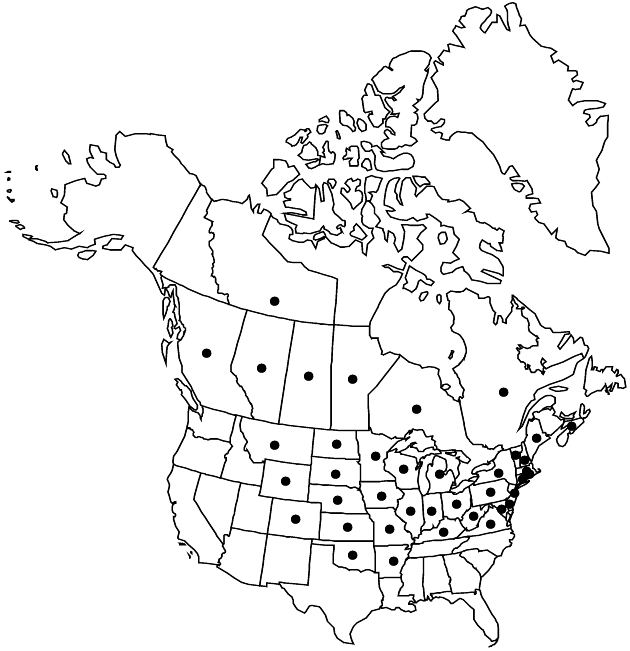Antennaria neglecta
Pittonia 3: 173. 1897.
Dioecious. Plants 4–25 cm. Stolons 2.5–18 cm. Basal leaves: 1-nerved, narrowly spatulate to cuneate-oblanceolate, 15–65 × 6–18 mm, tips mucronate, faces abaxially tomentose, adaxially gray-pubescent (green-glabrescent with age). Cauline leaves linear, 1.5–25 mm, distal flagged. Heads (1–) 2–8 in corymbiform to spiciform or racemiform arrays. Involucres: staminate 4–7 mm; pistillate 6–10 mm. Phyllaries distally white. Corollas: staminate 2.7–5 mm; pistillate 4.5–6.5 (–7) mm. Cypselae 0.9–1.4 mm, minutely papillate; pappi: staminate 3.5–6.5 mm; pistillate 6–8.5 (–9.5) mm. 2n = 28.
Phenology: Flowering early–mid spring.
Habitat: Plains, grasslands, pastures, and open woodlands
Elevation: 0–2500 m
Distribution

Alta., B.C., Man., N.W.T., N.S., Ont., Que., Sask., Ark., Colo., Conn., Del., Ill., Ind., Iowa, Kans., Ky., Maine, Md., Mass., Mich., Minn., Mo., Mont., Nebr., N.H., N.J., N.Y., N.Dak., Ohio, Okla., Pa., R.I., S.Dak., Vt., Va., W.Va., Wis., Wyo.
Discussion
Antennaria neglecta is a sexual progenitor of both the A. howellii and A. parvifolia polyploid complexes and has one of the more widespread ranges among the amphimictic species in the genus in North America. Amphimicts generally have small ranges compared to those of the polyploid agamic complexes derived from them. Characteristic features of A. neglecta are its lashlike stolons that bear reduced leaves (except at the ends), flags on the distal cauline leaves, and basal leaves that are green-glabrescent with age (R. J. Bayer and G. L. Stebbins 1982).
Selected References
None.